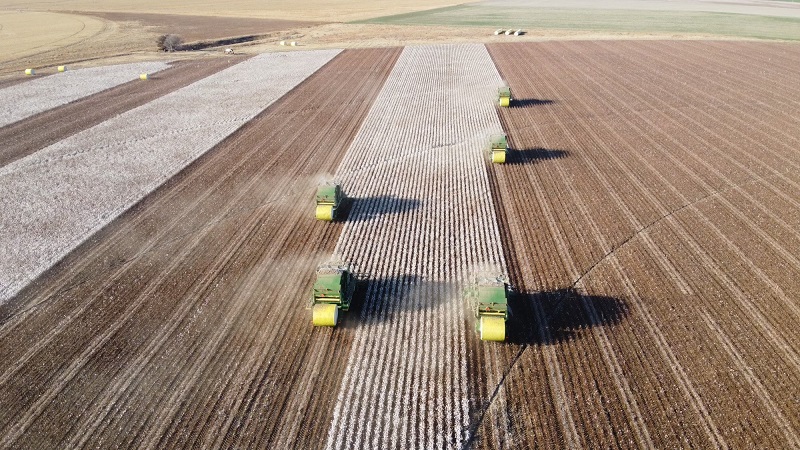Weathering The Storm
Cotton Incorporated first introduced its Storm Denim technology in 2006, but thanks to some innovative and exhaustive marketing efforts, it looks like retailers are finally beginning to take notice.
With highly successful name brands like Dickie’s and Eddie Bauer recently adopting the technology, the increase in demand for cotton could be noticeable all the way back down the supply chain. As Cotton Incorporated’s representatives explain, the denim market is vital to cotton’s survival.
“Denim is the largest market for cotton,” says Cotton Incorporated CEO Berrye Worsham. “It is kind of the bread and butter for cotton.”
The numbers back up Worsham’s statements. By many estimates, denim accounts for up to 20% of apparel that is sold at retail. As Cotton Incorporated Executive Vice President of the Global Supply Chain Mark Messura explains, denim represents up to 15% of the global off take of cotton.
“So our challenge at a product level is to look at where cotton is out there on the market and where we need to protect cotton share or where we need to grow cotton share,” says Messura, who does not use the term ‘protect’ lightly. “Every other fabric out there wants a piece of the denim market,” he says.
While cotton holds a 90% share of the denim market on a weight basis, Messura says the fastest growing market for denim is an 80% to 20% split between cotton and polyester. That 20% loss in market share could have huge ramifications on cotton, because of the sheer volume that denim moves on the market each year.
“Our job is to innovate, our job is to keep cotton fresh in the marketplace through fashion and through function, and to transfer those ideas to manufacturers, brands and retailers so that they can bring higher value, better performing cotton to the market,” Messura says.
WATER TIGHT
The idea for Storm Denim is a fairly simplistic one. Comfort, Messura says, is the number one attribute for cotton in the consumer’s mind. But as anyone who has been caught in a rain storm in a pair of jeans knows, that comfort factor quickly goes out the window when denim gets wet.
Storm Denim was born as an answer to that problem. The technology itself is applied to a garment after the piece of clothing has been created. A finished garment is treated with the Storm Denim technology.
A strong selling point for Storm Denim is that while it remains water resistant, it allows air to pass through the garment. As water beads up on the clothing, it is able to remain breathable.
“That’s why you’re uncomfortable in a rain coat, because you’re completely coated. The genius behind this technology is to make the fabric water-repellant but to make it breathable, so that you maintain that comfort of cotton and the comfort of your denim jeans, while you’re still dry,” says Messura.
And it looks as though global suppliers and retailers are beginning to take notice of the technology’s versatility. Storm Denim currently has 17 suppliers in 10 countries across the globe – and not just in the denim markets. Because Storm Denim technology is a finish, it is able to be applied to khakis, slacks, shirts and other items of clothing. It’s that versatility that has the technology catching on around the world.








